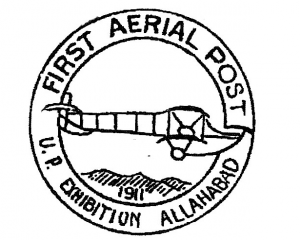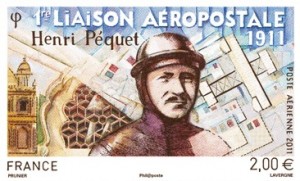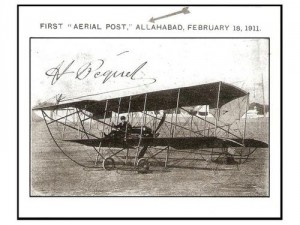When Airmail Hazards Included Buffalo
India is an air-minded nation. Philatelist Pradip Jain notes in his 2002 book Indian Airmails that the Ramayama, the ancient Sanskrit epic, includes references to King Nala and Princess Damayanti sending “amorous messages to each other through the medium of a flying, talking swan.” During the Maury…

India is an air-minded nation. Philatelist Pradip Jain notes in his 2002 book Indian Airmails that the Ramayama, the ancient Sanskrit epic, includes references to King Nala and Princess Damayanti sending "amorous messages to each other through the medium of a flying, talking swan." During the Mauryan dynasty (320-185 B.C.), rulers employed homing pigeons to communicate with the far reaches of their empire. "I am sure it would surprise many of my readers," continues Jain, "to know that to this day, the police of Orissa employ pigeon-mail to communicate with remote, backward and inaccessible areas to the state."
So it makes sense that India was home to one of the first airmail flights using an airplane. On February 18, 1911, French pilot Henri Péquet stuffed a sack of more than 6,000 postcards and letters into his Humber biplane, took off from a polo field in Allahabad, India, and headed for Naini, just five miles away. (The first recorded airmail flight using an airplane had taken place in Petaluma, California, just one day earlier.)

Péquet was in India at the request of Walter Windham, who had organized a series of demonstration flights. (Windham founded Great Britain’s Aeroplane Club in 1908, and, in 1909, presented the gold cup to Louis Blériot for making the first successful flight across the English Channel.) Péquet arrived in India with a pair of mechanics and a crated airplane; the three represented the Humber Motor Company of England. “Humber…had earlier manufactured single-winged airplanes based on a Blériot design now produced what they called a Roger Sommer craft,” notes the National Postal Museum’s Web site. “The Sommer biplane, a modified Farman biplane…had a 50 horsepower, seven cylinder, Gnome rotary engine.”

Jain writes that "the biplanes performed well at Allahabad, but the monoplane, with lower engine output, did not seem to operate well in the heavy warm air."
Péquet described his "instruments" to Edmond Petit of French Air Forces : "You would not believe it but our planes at this time were a sight. Before us was just space. I had a watch on my wrist and an altimeter on my left knee." When asked if he had any special recollections of the flight, Péquet replied, "No, only the buffaloes. Before landing I flew over the Ganga and I was not quite sure that I would make it. about 3 or 400 metres . But it was not the unexpected bath but the crocodiles that I feared."
Péquet went on to become a test pilot; by 1934 he was the chief pilot of the Aero Club of Vichy. He died at age 86, in 1974.
India Post staged a reenactment of Péquet's flight on February 12, 2011—using a Chetak helicopter, of all things—and has issued a set of stamps commemorating the historic flight.